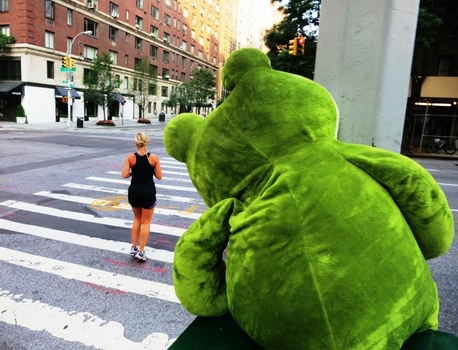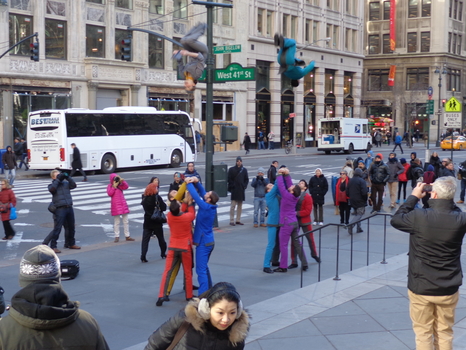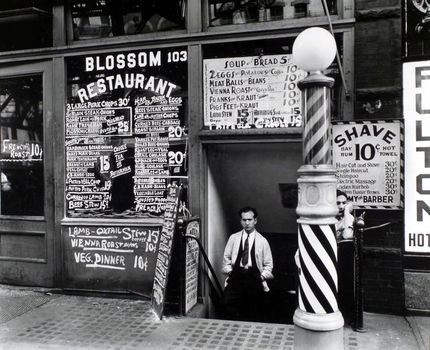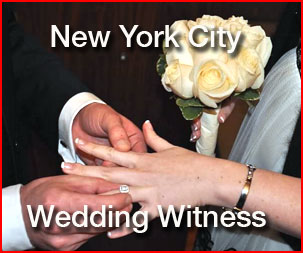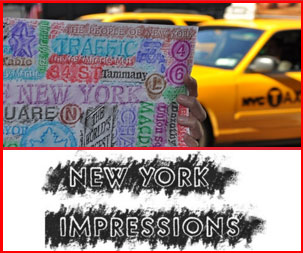F. Scott Fitzgerald’s short third novel, The Great Gatsby, – is shot through with flashes of gorgeous description, satiric wit, and bursts of dialogue that perfectly capture the ennui, emptiness and vulgar excess of the roaring twenties. The story centers on a mysterious con man, Long Island millionaire bootlegger, Jay Gatsby, and his pipe dream of re-capturing Daisy Buchanan, the gilded woman who got away . Fitzgerald is known for his love-hate relationship with the glitterati. With his panoply of characters, from the newly rich and the super-rich, to gangsters and the downtrodden, and a melodramatic plot replete with adultery, murder and suicide, he paints a slight but devastating picture of Jazz Age Manhattan. But the trivial nature of his characters makes their story seem too slight and their fate too insignificant to fret over.
Fitzgerald died at age-forty-six, without seeing his initially poor-selling novel rise to enduring, iconic status after World War 11. But the book sparked Hollywood interest a year after its 1925 publication. Baz Luhrmann’s new 3-D Gatsby, which premiered last weekend to a surprisingly strong number two box office spot despite mixed reviews, is actually its fifth cinematic incarnation. Luhrmann’s film is the loudest, flashiest, gaudiest and costliest iteration of Fitzgerald’s Lost Generation to date. But his Gatsby, like its predecessors, features Hollywood royalty of the day, a script that’s remarkably faithful to the novel, with chunks of its dialogue and description presented verbatim through the voice over (and at times the actual printed words) of narrator/Fitzgerald alter-ego Nick Carraway. And notwithstanding Luhrmann’s contemporary musical twist – his mash-up of a Jay Z and Beyonce score with old twenties favorites – this over-the-top Gatsby also offers a musical smorgasbord of nineteen-twenties hits. And despite the money lashed on their making, every Gatsby rendition has been panned by critics as too long, boring and at least a partial failure (mainly thanks to the overkill on the externals.)
The films differ in minor detail Gatsby’s silent screen debut in 1926, with William Powell, now lost, is best remembered for the scathing reaction of Fitzgerald’s wife, Zelda: ”We saw it… It’s ROTTEN and awful and terrible and we left.”
A black-and-white 1949 noirish version, with Alan Ladd and Shelley Winters, focuses more on Gatsby’s gangster past, ,altering the story’s time frame and Nick’s post-Gatsby life. The film opens twenty years after Gatsby’s death, with Nick wedded to golf champ Jordon Baker, and revisiting Gatsby’s grave. (In the novel, and other movie versions, Nick dallies with Jordon but is frightened off by her aloofness.) The 1974 color film, with a screen play by Francis Ford Coppola, starred Robert Redford opposite Mia Farrow and Sam Waterston. It’s mainly memorable for its substitution of the song, `Aint We Got Fun’ for Gatsby’s much-quoted ending: `And so we beat on, boats against the current, born back ceaselessly into the past.’
Conjuring Sunset Boulevard, a 2000 A&E TV version starring Paul Rudd, Mia Farrow and Bruce Dern, opens with Gatsby shot dead in his pool – a scene inexplicably followed by the narrator intoning: `Gatsby turned out all right in the end.” No less mystifying: Gatsby’s `supercharged, customized yellow hunk of a Rolls Royce convertible is white in this film.
Like La Boheme and his punk Romeo and Juliet, Luhrmann’s Gatsby adheres closely to its source. Its real stars, however, are the debauched bacchanalias at Gatsby’s West Egg mansion- a ,”kaleidoscope” of people from all walks of life, cavorting in the carnival atmosphere of an amusement park.
Leonardo DiCaprio, (Luhrman’s punk Romeo and Juliet; J Edgar) with his blend of dark blond charm, mannered speech and hint of menace is a perfect Gatsby – though it’s hard not to think that this actor is really at his best in drowning scenes – from the icy ocean in Titanic to his splendidly designed, unused pool in Gatsby. British actress Carey Milligan (Pride and Prejudice ; An Education), makes a convincingly vapid and manipulative Daisy, but she’s not quite beautiful enough. The rest of the cast, including Australian actors Joel Edgerton (The Thing; Zero Dark Thirty), and Isla Fisher (Diary of a Shopaholic; Wedding Crashers)are fine as Daisy’s philandering husband Tom and his Tom’s mistress, Myrtle. Tobey McGuire ((Spider Man Trilogy; Brothers) is okay as Nick, but a bit too bland; his second rendition of Gatsby’s rags-to-riches climb falls flat.
Like several of his predecessors – and to no great effect – Luhrmann tinkers with the role of Nick, here framing the film with Nick, rather than just observing, literally writing Gatsby’s story in a Midwest insane asylum several years after having witnessed the calamitous story.
Luhrmann’s film also ends without Gatsby’s Jewish father, James Gatz, arriving for his son’s unattended funeral. It’s also missing what may be the novel’s most famous line: Gatsby’s description of Daisy. `Her voice was full of money.
In the end, Luhrmann’s film best portrays the soured American dream – how the rich get away with everything and the poor are always made to pay. It’s also a reminder of Fitzgerald’s ahead -of his-time insightfulness, when he has Daisy’s brutish, husband, Tom, pontificate on issues that seem straight out of today’s headlines. Tom voices fear that whites could well become a minority race, and he worries about global warming – whether the sun, if it isn’t getting hotter, could be getting colder.
Despite its overkill and spectacular photography, Luhrmann’s film dragged. As in the novel, and its predecessor films, much of the story centers on speculation about who Gatsby is – he’s an Oxford man? A German spy? A drug dealer: a murderer? and about the shady means with which he acquired his money “Long and a little boring” several women recently said on leaving a sold out 1:15 mid-week show. “But that’s Baz Luhrmann,” another viewer said. “ Wooden and stylized!”, Other people had similar responses. “Not much of a story,” one man said on exiting.
And that may finally be the trouble with this and every on-and-off-screen Gatsby version. America may have a love affair with con-men criminals. But in Gatsby’s case, there not enough There There! Too much weight pinned on too gossamer a tale.


